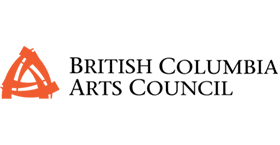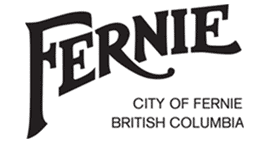Story Of The Station In Two Acts
This building has played an important role in Fernie for decades. It served for nearly its first 70 years as Fernie’s hub of transportation of both people and goods and now for more than 30 years as its centre for the arts.
Act One- The Train Station
This is the third station that Canadian Pacific Railway (CPR) built on the same location, the original station built in 1898 and its replacement were both destroyed by large scale fires burning all of Fernie’s downtown, the first in 1905 and again in 1908. The quick post-fire reconstruction of the station reflected Fernie’s status a centre of commerce on the CPR’s Crowsnest Branch Line (aka South Line) from Lethbridge, AB to Nelson, BC. CPR’s This Craftsman Style structure completed in 1909 is among a small group of ‘Special Stations’ designed by CPR. While a unique build, it is close in layout to both the Standard 9 and 10 Stations CPR utilized as a measure to both keep construction cost lower and to provide continuity in design along the line. CPR, contractor McDermot and Company used lumber in the station’s construction and in doing so ignored the City of Fernie’s 1908 fire prevention related by-law, prohibiting the use of wood in new construction.
As another economic design decision CPR applied in its construction was to combine all of the functions of the stop under one roof. This included working spaces space to sell services, safely monitor the trains, waiting rooms for customers, telegrams to be sent and received, office space for managing records and funds, storage space for freight and a separate private upstairs living space for the station agent and their family. Its functional design can be seen in a number of architectural features such as the bay windows on the east side of the building allowing the station agent clear views both directions on the tracks and the large double wooden doors which allowed for easy freight access. The design of building’s exterior space incorporates overhanging eves to provide shelter from mountain weather including both sun and snow.
For many years the station served as the place from which most people arrived and departed from Fernie as well as the point of entry for almost all mail, telegraphs, goods and as the exit for a high percentage of the coal and lumber being extracted from the area. By the mid 1960s as technology changed, demands of consumers and industry evolved, the functions of the railway station and the jobs that were associated with its operation became less relevant. The last passenger train stopped here in 1964. By 1979 CPR had allowed for the station to fall into disrepair and abandoned its use.
Act Two- The Arts Station
In the mid-1980s the City began to contemplate the demolition of the station. During this period the Fernie Arts Council founded in 1973 had been searching for a permanent home and saw potential in the neglected building. The City, CPR and the Arts Council undertook negotiations regarding the ownership of the building and its management. CPR made the donation to the City, of the building and a portion of property just fifty feet away from its tracks to relocate it too. The City in turn leased the building to the Arts Council. Beginning in 1987, the Arts Council, undertook a community driven, multi-year project to rehabilitate the station.
The Arts Council embarked first on raising the capital for the project beginning with local donations, obtaining grants at the municipal and provincial levels and qualifying for provincial job training programs. The physical rehabilitation of the building began with cleaning it out and preparing it to be moved out of the CPR right of way to across First Avenue, a distance of about 50 feet to its current location. The move itself took two tries before successfully placing it on the new foundation and basement. Countless hours over the next three years saw teams of volunteers, skilled tradespeople and trades in training, working alongside each other in the effort to repurpose the building while conserving its historic character.
The room which once served as the freight room for the station became a 100-seat theater. The upstairs where the station master had resided turned into workshop and classroom space, the station waiting area into a gallery and café. The offices once used by CPR employees became offices for the Arts Council and a new basement level created additional space for potters, photographers and backstage needs. The Arts Council has continuously used the building since 1990 to host art shows, classes, to provide studio space and a venue for the performing arts including a wide variety of plays and concerts.
Fernie Station Timeline
The arrival of Euro settlers in Western Canada brought changes to the area including smallpox and introduction of horses.
The establishment of US border takes place along 49th parallel. The Bison population in serious decline.

John Palliser initiated a plan to travel between Red River Colony and through the Rocky Mountains along the unsurveyed American boundary in 1857-60. Palliser expedition comes through this area in 1858.
BC is persuaded to join the confederation formed July 1, 1867 on the promise that within ten years a transcontinental railway will join the country east to west.
Michael Phillipps and John Collins, prospectors exploring the Elk River and its headwaters in search of gold found coal instead at Michel Creek. Phillips realizes he has discovered a unique low-lying route through the Rocky Range and names it Crow’s Nest Pass. He gained the government contract to build a trail through the area and the railway would eventually follow the same path.

The Indian Act forces Ktunaxa onto reservations. Despite being subjected to 120 years of living on Indian Reserves, and decades of forced attendance at a Residential School at the St. Eugene Mission near Cranbrook, the Ktunaxa Nation continues to be a strong and thriving community. Today, there are more than 1,500 members in the BC communities of ?akisq?nuk, ?aq?am,?akink?um?asnuq?i?it, and yaqan nu?kiy. There are two Bands in Idaho and Montana connected by language and culture but politically independent.
To learn more about the living culture and traditions of the Ktunaxa Nation: ktunaxa.org

Peter Fernie as the government superintendent of roads takes over the project from Phillipps.
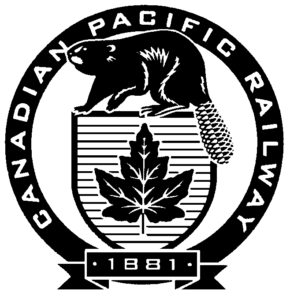
Canadian Pacific Railway Company (CPR) is incorporated, it is a syndicate made up of Scottish Canadian businessmen with George Stephen, President. In the first-year little track is built, resulting in the termination of Chief Engineer and General Superintendent. William Van Horne from the US is brought as new General Manager with the task of completing the railway across the plains and over the mountains.
Dr. George Dawson of the Geological Survey of Canada determined the coal deposits in the Elk Valley were extensive. Other local high-grade minerals include lead, zinc, silver and copper.
The eastern and western portions of the CPR met at Craigellachie, BC.
The former Gold Commissioner, William Fernie, his brother Peter and Colonel James Baker Cranbrook, a land-owner form Crowsnest Pass Coal Company begin the purchase of land in the area. They convinced CPR’s Van Horne that a line should be built through area. Van Horne lobbied for government subsidies to build what would be known as the Crowsnest Branch Line running from Lethbridge, Alberta, to near Nelson on Kootenay Lake. It cost it $19 million to build the route in 16 months. Locally CPR also laid out spur line to Coal Creek mine site. With eventual additions to the route including the Kettle Valley Railway, the route became known as the CPR’s Southern Mainline and reached the west coast.

CPR reaches Fernie establishing the community as the regional railway and mining hub. The town of Fernie is established and begins to grow. It is labeled ‘The Pittsburgh of Canada’ by the Canadian Board of Trade. CPR constructs a Type 6 Station. Coal Creek Mine opens. First lumber mill erected.
Photo credit: Fernie Museum Archives-1270
American owned Great Northern Railway a competitor to CPR begins laying lines from Rexford, Montana to Fernie then on to Michel, to export coal to the United States.

Coal Creek Mine disaster kills 128 miners; train takes bodies to Fernie for burial.

July 28, Fernie incorporated as a municipality. Great Northern Railway reaches Fernie and begins exporting along this line much of the Elk Valley coal until the 1920s.
Photo Credit: Ance Building Services Co
July 27, fire destroys commercial district and CPR Station.

CPR rebuilds the station.
Lumber production is a major industry with 15 sawmills putting out milled product used locally and afar.

August 1, an out-of-control bush fire driven by high winds burns through Fernie as a cyclonic fire spout. By some accounts fire killed 10, destroyed 100 businesses and 700 houses. All of CPR buildings were lost including the 1904 station. According to the Fernie Free Press ‘The frame structure of the station also burned with the intensity of kindling wood.’ To prevent such destruction in the future the City of Fernie introduced a by-law prohibiting use of wood in new construction. Train carried thousands of the people fleeing the fire to Hosmer and others to Cranbrook.
Photo Credit: Fernie Museum Archives

CPR Station is newly built of wood by contractor McDermot and Company, at the cost of $20,000. Due to the destruction by the fires, the station is the third that CPR built on the site. Station is classified as a Special Type, Kootenay Division, Cranbrook Subdivision. The Victoria Times describes the new station as ‘…handsome and very commodious. The waiting rooms, baggage and express offices are large and airy, and the agents’ and operator’s quarters all that could be desired.’ The majority of rebuilt structures throughout the city are constructed of brick, the station being the anomaly. Its rapid yet resilient construction demonstrated that rail service was essential for Fernie’s general economic and societal development.
Photo Credit: Fernie Museum Archives-3284
The new station, completed in 1909, is the building that still currently stands today.


Photo Credit: Fernie Museum Archives-5693 & -5117

First miners’ strike for better working conditions. Fernie is snowbound, trains cannot come in or out. Station gets a fresh coat of ‘scarlet paint.’ Likely a deep red brown frequently used on the line’s buildings. (Fernie Free Press, June 1911)
World War I, many of Fernie’s young men deploy, leaving from station. Those originally from Austria, Germany, Czech, Slovakia and Ukrainians are considered enemy aliens, interned first in Fernie then Morrisey, eight miles away.
Labour disputes and strikes at mines are prevalent occurrences.

Fernie has a vibrant performing arts scene inclusive of community performances, choirs, bands, dance and theater.
Photo Credit: Fernie Museum Archives-5681
Great Depression brings reduced hours to mines operating two days per week.

Photo credit: Fernie Museum Archives-2514
Fernie coke ovens close.

Photo Credit: Fernie Museum Archives-
Great Northern Railway reduced service to one train per week for passengers and coal.

Great Northern Railway terminated service all together and removed its rails from Elko to the Montana.
Canada enters into World War II. The war brings an increased demand for coal.
With post-war technological developments, CPR along with other railways began to replace coal engines with diesel reducing demand for coal. Post war immigration brings an influx of Italians to Fernie.

CPR begins to transition all trains from coal to diesel and demand for coal begins to decline.

The last CPR steam engine passes through Fernie. In this photo you can see the old station water tower.
Ski hill at Proctor Mountain opens.
Coal Creek Mine closes. Fernie continues to serve as a bedroom community for mines still operating in the Michel Creek area. Brewery moves to Creston.
First shipment of coal from the area is made to Japan in 1959. Mining is revitalized by Japanese markets utilizing Canadian coal for their steel mills as their auto industry grew.

An unsuccessful Olympic bid is made for the 1968 winter games. This leads to installing a Handle Tow at Liverwurst Bowl (near present day location of Island Lake Lodge Cat-Skiing).

Fernie Alpine Resort begins operation as Snow Valley Ski Hill.
CPR makes an application to cease passenger service over 600 miles from Medicine Hat to Spence’s Bridge, BC, citing loss of revenue due to low patronage by the public. Some of the public members at hearing stated that CPR had made deliberate efforts to downgrade service and discourage passenger traffic.
January 16- Train No. 45 a diesel ‘Budd’ car, the last passenger train, left Fernie and passenger service was discontinued. Station becomes not as necessary for operation of train in area. Highway 3A opened.

Street names are changed in Fernie, including those surrounding the station. Baker Avenue becomes 1 st Avenue, Hanson St. and Jaffary St. become 6 th St. and 7 th St.
Open pit mining begins. Kaiser Steel of California purchases Crow’s Nest Pass Coal Company. New influx of immigrants from Scotland, Wales and England arrive to area.
The coal market is strong with exports. CPR is abandoning lines and demolishing stations across western Canada.
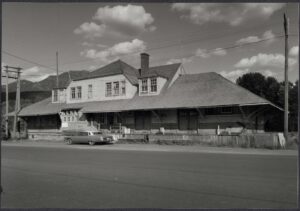
Photo credit: Fernie Museum Archives-3632

Fernie and District Arts Council forms with its founding members having a strong interest in the performing arts. Performances take place on retrofitted stage at Community Centre.
Arts Council actively looking for a permanent home, explores a number of heritage buildings unused including the old hospital, the Vouge Theater, Fernie Cartage Building, SIS Building and the potential for constructing a new steel framed structure. Find out more about the Arts Councils journey from founding members:
The Arts Council and its membership continues to grow and diversify as the local Fine Arts group joined and so did the quilters and weavers.



CPR Station is last used by the railway. It falls into disrepair.

By-Law No. 1226 is passed making the Canadian Pacific Railway Station in Fernie a Municipal Heritage Site, signed by Mayor Gus Boersma. Building added to Fernie Heritage Register.
Photo credit: Fernie Museum Archives-3594

Due to purposeful neglect by CPR and resulting vandalism and decay, the Station is removed from the city’s Heritage Register. City of Fernie considers the economic viability of keeping the delipidated CPR Station standing.

City of Fernie stated it could see no viable uses for the CPR building and is poised towards demolition. However, Fernie Arts Council expressed intent to rehabilitate the building. With this wish accounted for CPR donates building to City of Fernie. Fernie in turn leased the building to the Fernie and District Arts Council.

Complete end of underground coal mining while open pit mining continues in area. Fernie and District Arts Council member Beth Gregg begins the efforts to obtain the CPR Station for the Arts Council’s future home and Heritage Conservation Architect Eileen Fletcher is engaged by the Arts Council. Fundraising efforts are undertaken from the local level to the provincial level to secure the capital for the restoration. City of Fernie provides financial support to the Arts Council, donates land directly adjacent to its original location, within fifty feet of where it was constructed on the railway allowing for the building to mostly remain close to its historic context of place. City also creates new traffic pattern to accommodate the building.
Restoration begins. Local crowds of long-time Fernie residents arrive in anticipation of watching the building be moved from the tracks to the donated lot 50 feet away. However, building only moved an inch with a miscalculation of the weight of the building due to its internal stabilizing beams. The following week building is successfully moved with three tractor trailers to its new location across first street and a slight jog to the south on City owned property. Job Tac a Provincial program provided funding for the project to hire individuals in need of trade training and on social assistance. At times the Job Tac crew included 30 people. Project Manager/ Site Supervisor Dave O’Haire worked coordinating efforts between Job Trac crew and volunteer working parties.



Work to building included: re-roofing, dismantling and rebuilding the chimney and fireplace, restoration of heritage window, doors, trim, walls, flooring and exterior siding and awnings, the construction of new decking around the building, adaptive re-use of the baggage room, installation of a kitchen and dining space, upgrade of washrooms, conversion of the living quarters and the addition of a basement. The Arts Station exhausted its funding, physical work to the building was paused and additional funds were raised through Municipal, Provincial and Federal grants.

October 5, The Arts Station officially opens to the public with close to 1,000 attendees. Building houses in its new basement a pottery studio, photography lab, backstage changing rooms and costume storage. The ground floor rehabilitated to include a 100-person capacity auditorium in what was once the baggage room, entrance gallery, tearoom, kitchen, washrooms and an office. The top floor once the station agents living quarters featured an open flexible studio space and the control room for the auditorium. While there was intent to paint the building choosing from historic colors, the Arts Council choose a bright blue contemporary color.

With success of the ski area and increased interest in mountain sports and lifestyle Fernie’s tourism industry grows. Arts Council hosts numerous plays, musical performances, art shows and workshops in the Arts Station. The building is used frequently.
Major mine closure, population drops.

Teck Coal is supportive of arts and culture to create a quality of life in the Elk Valley. Through the mine sharing agreement money is provided annual for recreation and culture including The Arts Station. Teck also supports arts council community festivals & projects annually.


CPR donates a box car to the arts council. It is moved into place by CPR staff as a training exercise. A local logging company help move it. It remains at the Arts Station for only a few years for storage before it is relocated to the City yards.

Canadian Pacific Station Square established to the south of the Arts Station. Fernie is recognized as a Cultural Capital of Canada. Major award to Arts Station with CPR donating $60,000 matched by the City of Fernie Heritage.
The Station windows are replaced with those of a like material. Fernie’s key economic sectors are mining, forestry and tourism.

The exterior of the building is repainted using colors more closely related to historical ones.

Renovation of the top floor of the building takes place including installation of new hardwood floors. This space is multi purpose studio for all different types of art practices.
Over a few years new decking around the building with a covered accessible ramp was added. This includes a renovated stage area for Station Square. Arts and Cultural festivals are held outside the Arts Station including Wednesday Socials.
Theater floor is also replaced with hardwood.




A sculpture created by artists, Michael Hepher and Paul Reimar was officially unveiled to the public outside The Arts Station on June 1st 2018.
The sculpture was inspired by the legacy of the 1908 fire. The Great Fire of 1908 was a dramatic, defining moment for Fernie that saw the community obliterated by fire in less than 90 minutes on August 1st, 1908 fire claimed lives, however a very low number considering the extent of the destruction. The property loss was valued at over $5 million dollars, a staggering amount at the time
Funding was received for the project through a joint application between the City of Fernie and the Fernie Museum to the BC Canada 150: Celebrating B.C. Communities and their Contributions to Canada Grant Program.

Fernie Arts Council celebrates 30 years in The Arts Station.



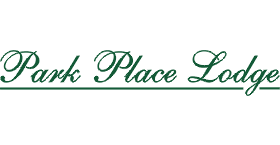
Special thanks to:
Susan Medville from Mountain Heritage.
Lynda Bird, Dave O’Haire.

